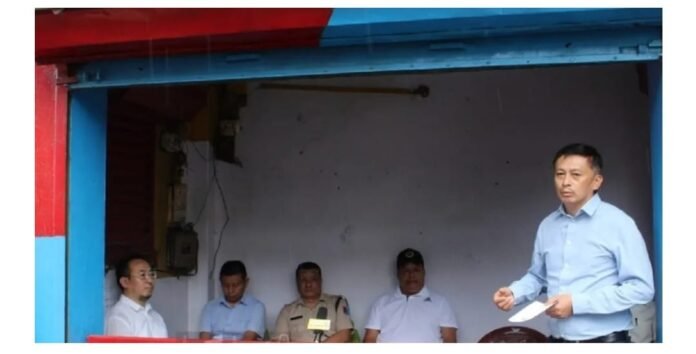Nestled in the picturesque landscapes of Northeast India, Nagaland is renowned for its vibrant culture and rich biodiversity. However, rapid urbanization has brought about its own set of challenges, with the two major towns of Kohima and Dimapur bearing the brunt of environmental concerns. Hukato Chishi, member secretary of the Nagaland Pollution Control Board, highlights the pressing issues faced by these urban centers and emphasizes the need for sustainable solutions.
Kohima, the hilly capital city, boasts of stunning vistas and historical significance. Yet, the mounting population and increasing vehicular traffic have led to a surge in air pollution. The unchecked construction activities, inadequate waste management systems, and rampant deforestation further exacerbate the city’s environmental woes. The delicate balance between urban development and preserving the region’s natural beauty demands immediate attention.
Dimapur, the state’s commercial hub, has witnessed rapid growth in recent years. As industries and businesses flock to the city, there is a corresponding rise in industrial pollution and waste generation. The once-pristine rivers and water bodies have been tainted with contaminants, posing a threat to both human health and aquatic life. Additionally, the improper disposal of electronic waste and plastic products adds to the ever-growing burden on the environment.
Mr. Chishi emphasizes that addressing these challenges requires collective efforts from the government, residents, and businesses. Implementing effective waste management practices, encouraging eco-friendly initiatives, and promoting sustainable urban planning are pivotal steps towards mitigating the impact on the environment.
To combat air pollution in Kohima, promoting public transportation, encouraging the use of electric vehicles, and implementing emission control measures for industries are crucial steps. Additionally, preserving the surrounding forests and creating green spaces within the city can help offset carbon emissions and improve air quality.
In Dimapur, the establishment of eco-industrial parks with advanced waste treatment facilities can significantly reduce industrial pollution. Raising awareness among industries about the importance of adhering to environmental regulations will foster a culture of responsible manufacturing. Furthermore, community-driven initiatives, such as river cleanup drives and recycling campaigns, can help restore the city’s water bodies and curb plastic pollution.
In both towns, the active involvement of the public is essential to bring about lasting change. Engaging in tree-planting drives, participating in awareness programs, and adopting eco-friendly practices in daily life will collectively contribute to the preservation of Nagaland’s natural heritage.
The government also plays a pivotal role in enacting and enforcing stringent environmental policies. Strengthening the Nagaland Pollution Control Board and empowering it with adequate resources will enable better monitoring of pollution levels and effective implementation of environmental regulations.
It is essential to recognize that sustainable development is not merely a choice but a necessity for the survival of Nagaland’s ecosystem and the well-being of its people. By working together and taking proactive steps to safeguard the environment, the residents of Kohima and Dimapur can lead the way towards a greener and healthier Nagaland, setting an inspiring example for the entire nation.




